Estimated reading time 12 minutes, 23 seconds.
I already had my wings, so why was I anxious? Our CT-156 Harvard II trainer was rolling for takeoff from Runway 29-Right at 15 Wing Moose Jaw, Sask., but this was just a media ride, right?
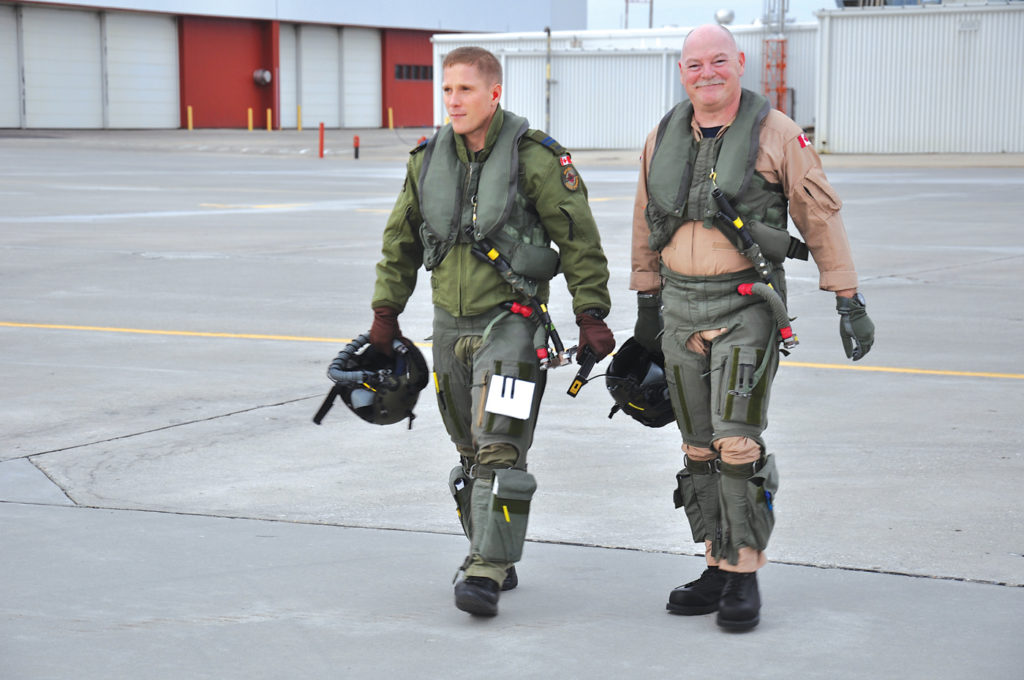
No. For one week last October, I “re-enlisted” as a student pilot to try my hand at modern air force flight training. RCAF Today sent me back to 2 Canadian Forces Flying Training School (2 CFFTS), otherwise known as the “Big 2”–30 years after my own pilot training course–to see what changes the intervening decades had brought to military flight training.
Most Canadian military pilots fondly recall their time in “The Jaw;” an experience combining high expectations, intense stress and incredible opportunities. Much had changed. The buildings, the aircraft and the young faces were new, and technology had left its digital fingerprints on everything. But a week with the Big 2 would show that the ethos and professionalism of RCAF pilot training were just as I remembered.
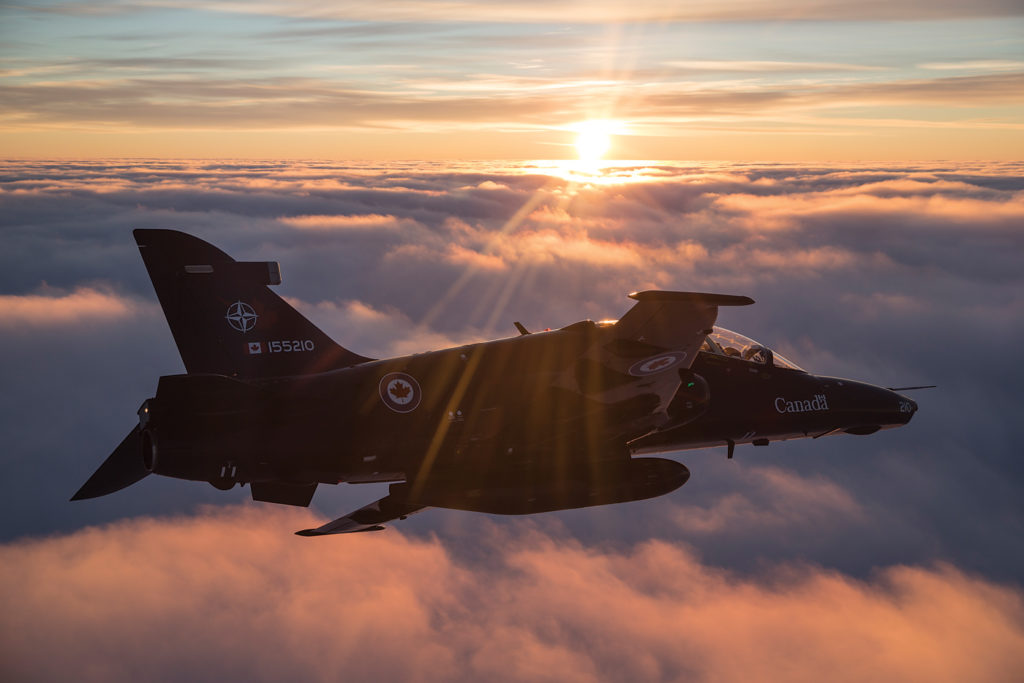
Canada has a proud heritage in aircrew training. RCAF Station Moose Jaw opened in 1941 under the British Commonwealth Air Training Plan. Then, as today, it was a Harvard base, although times have changed and so have the Harvards. The iconic yellow, radial-engine RCAF Harvard of the 1940s gave way in the late-1960s to the Canadair CT-114 Tutor jet trainer, and finally to the turboprop Beechcraft CT-156 Harvard II flown today.
GROUNDSCHOOL FIRST
Ground training monopolizes the first 10 weeks of the course and includes classes in aircraft systems and limitations, aerodynamics, meteorology, navigation, instrument flight procedures and air regulations.
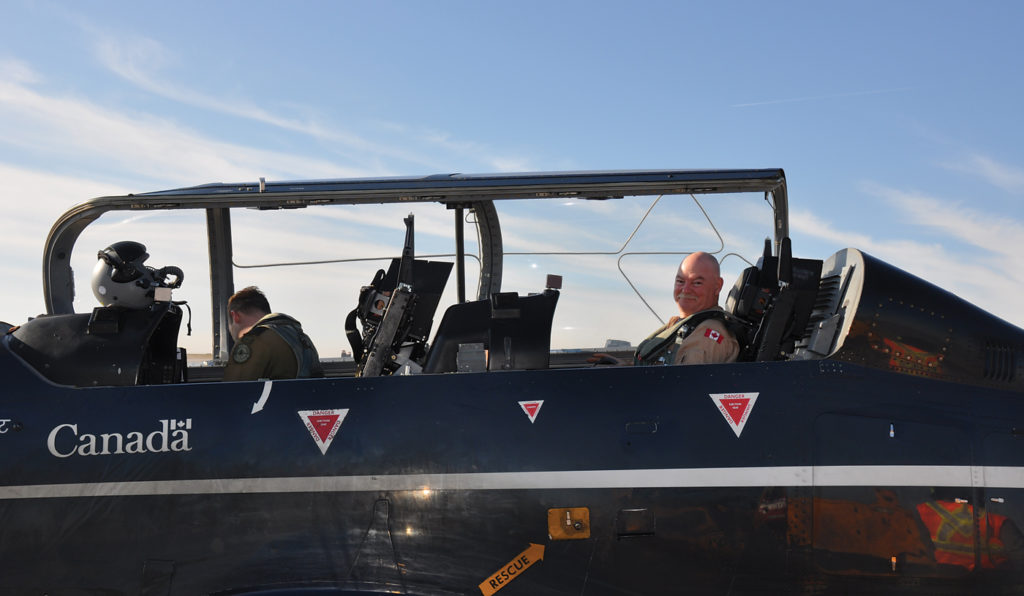
In my role as a student pilot, I attended a groundschool lecture on instrument flight procedures with Class 1607; a group of 16 eager students in their early-20s who kibitzed and chatted before settling in front of their laptop computers.
Today’s groundschool is well equipped compared to the chalk-and-talk instruction that we received. Students are provided with digital courseware, and the lecture was a polished multimedia presentation covering the fundamentals of the instrument landing system. I’ll admit that I learned a few things.
Our instructor, Trent Morgan, was eminently qualified, having been an RCAF CC-130 Hercules pilot who has been instructing in Moose Jaw for the last 14 years. Morgan’s instructional style was casual, personable and interactive. I can’t recall ever feeling as prepared for our classes as the group that I joined. They seemed to largely already know the material, and had gathered in class more for discussion and confirmation than for teaching. This was my first indication that Air Force flying training was not quite as I recalled it.
SIMULATION CHANGES EVERYTHING
After 10 weeks of groundschool, students move into the simulator to prepare for their first flight. They wear a parachute harness, helmet and mask in the “box” to maximize the fidelity of the experience.

Similarly attired, I took a turn in the simulator for a familiarization lesson in cockpit systems and procedures, basic handling, overhead breaks, stalls and introductory aerobatics. Simulator instructor Jeff Young schooled me on Harvard II rules of thumb, noting for example that a one per cent change in engine torque equates to two knots airspeed.
Military flying is done very much “by the numbers.” The specific technique of flying every manoeuvre is spelled out in the impressively thorough Standard Maneuver Manual (SMM), making for a lot of detail to remember. I didn’t. Things were moving a tad quickly. I risked a nostalgic smile. Welcome back to Moose Jaw!
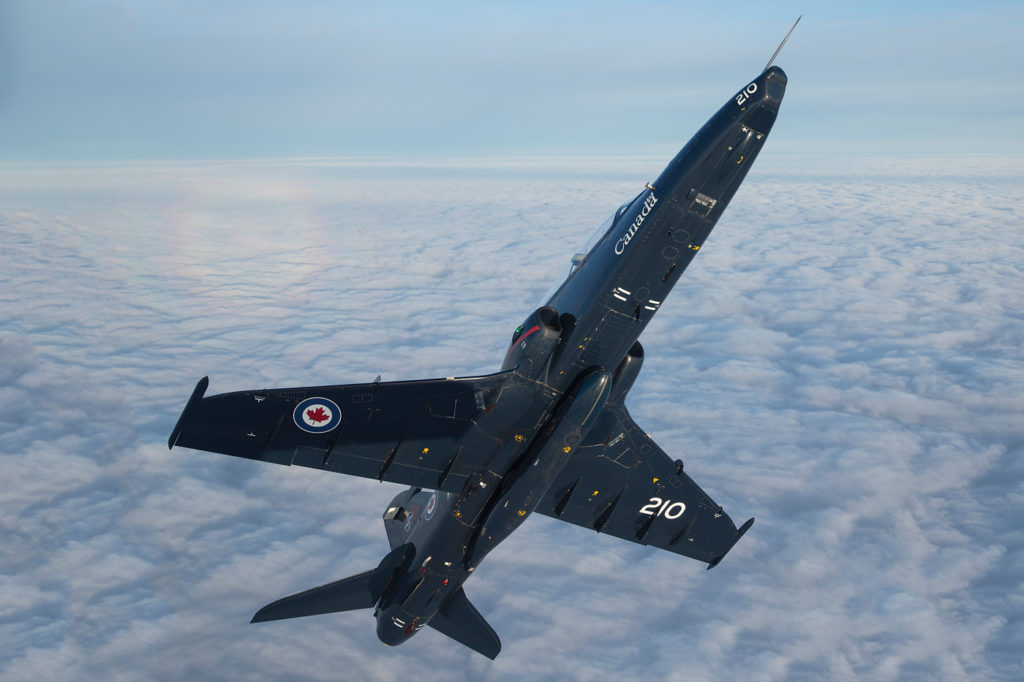
The Air Force has made a commitment to comprehensively integrate simulation into the training syllabus. Pilots of my vintage will recall that we, too, had a Tutor “simulator,” but the ol’ Tutor “box” was built before the microprocessor age, and its operation relied mostly upon unseen hamsters on squeaky treadmills. Today’s simulators are breathtakingly capable by comparison.

Owing to their extensive use, simulated emergencies are no longer practiced in the aircraft. The rationale is that emergencies conducted in the simulator can be performed to a higher degree of realism, and actually followed through to their logical conclusion, whether that involves a decision, a diversion or an ejection.
WHAT DO YOU MEAN, “THE STUDENTS DECIDE?!”
Students typically hit the flight line after about 13 weeks on course. It wouldn’t be an exaggeration to say that they will have learned to fly the Harvard II before they ever venture aloft in it. Having drilled themselves in aircraft limitations and operating procedures, and having practiced extensively in the simulator, the expectation is that students will demonstrate competence from their very first flight: starting the engine, talking on the radio, performing pre-flight checks and doing the takeoff.
Making the training challenging, or as one instructor put it, “seeing what you’re capable of,” is established from the beginning. The training continues apace. Sortie “clearhood 2” includes stalls and unusual attitude recovery techniques.
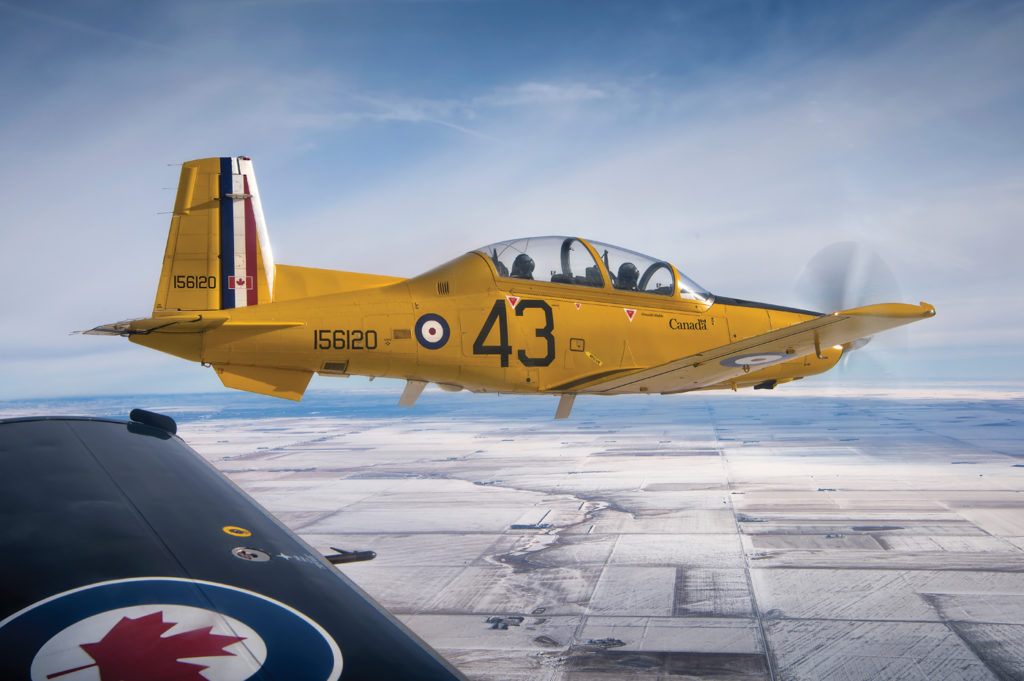
To better understand a course that numerous students described as like “drinking from a fire hose,” I sat down with the Big 2’s commanding officer, LCol David “Donkey” Smith, who led the school through a fundamental “rethink” of the syllabus in 2012.
The new syllabus is structured in “blocks” of four to six training sorties, each culminating with prescribed performance objectives that the student is expected to meet. Students, rather than instructors, are responsible for deciding what they will do on a particular sortie, given the time available, their progress and aptitude, the weather conditions, and the material they are expected to master.
Pilots of my era will recall things differently, where the syllabus was rigidly prescribed, and each training flight followed the written plan. Notwithstanding the march of technology, this subtle pedagogical change is perhaps the singular biggest shift to have occurred at the Big 2 since my departure.

Smith offered that the new syllabus is more flexible and “makes students take ownership of their training.” Instructors with whom I spoke were unanimous in their enthusiasm for the syllabus, often quoting the aphorism that, “flexibility is the key to air power,” and noting that it was never too early to teach students mature and flexible aeronautical decision-making.
TRAINING IN THE HARVARD II
By the evening before my Harvard II flight I had thoroughly read the SMM, but I still felt ill at ease. Putting away the books with the intention of getting a good night’s sleep, I admit to feeling anxiety that I would be ready to perform the next day. I had learned to strap-in and egress safely; never a trivial procedure in an ejection seat-equipped aircraft, but I felt I could use more time for cockpit familiarization, and wanted to rehearse procedures a bit more.
Then it occurred to me…I came for the student experience. This is it! That’s what they mean by “drinking from a fire hose!”

Mike Luedey Photo
Our flight was to be a composite clearhood training mission including slow flight, stalls, spins and aerobatics, culminating in some circuits in the traffic pattern. We would fly aircraft CT-156118; call sign “Apache 15.” My instructor in the Harvard was pipeline instructor Capt Mark Shular.
As I recall from my time at “The Jaw,” students are expected to know the material cold before venturing into the briefing room. A typical sortie is 1.4 hours in duration, and time in the aircraft is a valuable resource. We briefed each manoeuvre thoroughly, so that there was nothing left to do in the air but watch Shular’s demonstration and try to repeat it, in accordance with the military’s instructional paradigm, “EDIC”: explain, demonstrate, imitate, critique.
We squeezed a lot out of that hour aloft. The Harvard II was an excellent classroom, despite Shular’s less than adept student. All manoeuvres were expertly demonstrated, and then some I was allowed to repeat, constrained as we were by RCAF flying regulations.
The first exercise, slow flight, didn’t present too many challenges; but if I thought I might practice further, I was mistaken. The clock was ticking and we needed to move on to the next task. I commented on the pace of the sortie, and Shular’s response seemed very apropos: “It’s not enough to be smart. You’re expected to be smart quick.”
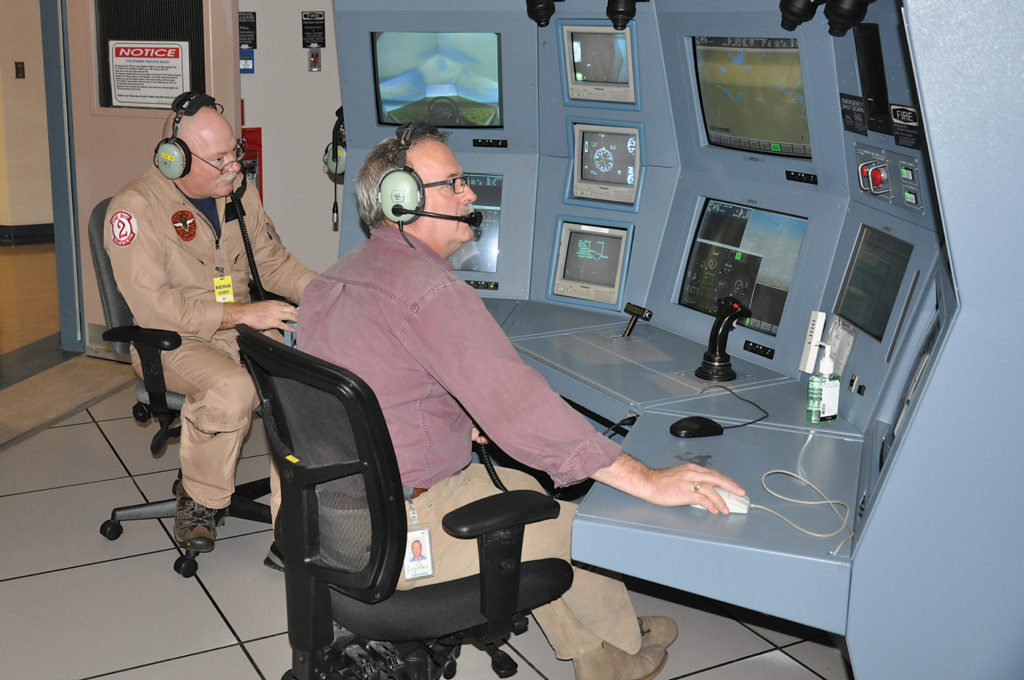
It was a good summary of the whole Big 2 experience.
The Harvard II’s biggest strength is that, for a relatively high-performance airplane, it’s very forgiving to fly. In terms of weaknesses, some instructors lamented its limited in-flight ice protection, lack of a precision approach-certified GPS, and its tandem seating, which gives the instructor less direct visibility to monitor the student’s behaviour.
Its trim aid device, designed to reduce propeller-induced coupling, is notoriously quirky, requiring some less than intuitive footwork on the pedals when making power or airspeed changes; but overall I enjoyed the Harvard II’s tight, responsive controls and honest character. Learning to fly in a trainer that delivers a 2,200 foot-per-minute climb rate at 180 knots is an experience only the Air Force can offer! Then again, if high-performance appeals…
GRADUATING TO THE HAWK
The CT-155 Hawk jet trainer is a very British aeroplane indeed, meaning that the cockpit layout and ergonomics were–oh, putting it politely–different.
Fortunately, once aloft it’s also a very charming aeroplane, and any red-blooded pilot will tell you that seeing 500 knots indicated airspeed en route to the training area is a good thing!

I had the pleasure of flying the CT-155 Hawk with pipeline instructor Capt Ross Harbottle. In a 60-hour syllabus, he takes newly minted fast-jet pilots through clearhood, instrument, navigation and formation training to build proficiency on the Hawk. The use of the Hawk in Moose Jaw is limited to type conversion training before commencing fighter lead-in training with 410 Squadron in Cold Lake, Alta.
During our hour as “Dragon 62,” Harbottle demonstrated unfamiliar air combat manoeuvres such as pitchbacks and slices. There was even time for some aerobatics, slow flight, stalls and spins. Once again, making the most of our time aloft was clearly a priority.
From the cockpit, the value of the Hawk became evident. As an airplane with a glide speed of 190 knots, and one that requires 6,000 feet to do a loop, it is a big step up in capability from the Harvard II. The Hawk’s higher performance and more challenging handling make it a necessary stage for prospective fighter pilots.
BACK TO SCHOOL
Returning to Moose Jaw after an absence of 30 years, I found that nothing had changed and yet everything was different.
New training aircraft and extensive use of simulation are among the improvements delivered by advances in technology. An even bigger change is the student-centred training syllabus that seeks to turn prospective military pilots into decision-making aviators from their very first flight.
The cultural fundamentals of military flight training, however, are unchanged. The RCAF still has high expectations for pilot trainees, and keen young students still invest a whole lot of late-night study, practice and sweat towards meeting those high standards. Today, as for generations, student pilots strive for perfection on each flight; an ethos of professionalism that pervades the entire culture of the Big 2.
Just as I remembered.


Very interesting article – Article très intéressant